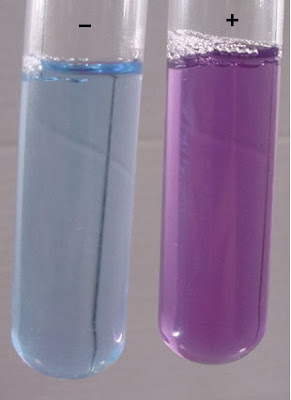Kjedahl Method
Kjedahl method is used to determine the nitrogen compound, It also indicated the amount of protein in the material. Kjedahl is standard method for estimating protein content in food.
The method consists of heating a substance with sulfuric acid, which decomposes the organic substance by oxidation to liberate the reduced nitrogen as ammonium sulfate. In this step potassium sulfate is added to increase the boiling point of the medium (from 337°F to 373°F / 169°C to 189°C). Chemical decomposition of the sample is complete when the medium has become clear and colorless (initially very dark).
The solution is then distilled with sodium hydroxide (added in small quantities) which converts the ammonium salt to ammonia. The amount of ammonia present (hence the amount of nitrogen present in the sample) is determined by back titration. The end of the condenser is dipped into a solution of boric acid. The ammonia reacts with the acid and the remainder of the acid is then titrated with a sodium carbonate solution with a methyl orange pH indicator.
The solution is then distilled with sodium hydroxide (added in small quantities) which converts the ammonium salt to ammonia. The amount of ammonia present (hence the amount of nitrogen present in the sample) is determined by back titration. The end of the condenser is dipped into a solution of boric acid. The ammonia reacts with the acid and the remainder of the acid is then titrated with a sodium carbonate solution with a methyl orange pH indicator.
- Degradation: Sample + H2SO4 → (NH4)2SO4(aq) + CO2(g) + SO2(g) + H2O(g)
- Liberation of ammonia: (NH4)2SO4(aq) + 2NaOH → Na2SO4(aq) + 2H2O(l) + 2NH3(g)
- Capture of ammonia: B(OH)3 + H2O + NH3 → NH4+ + B(OH)4–
- Back-titration: B(OH)3 + H2O + Na2CO3 → NaHCO3(aq) + NaB(OH)4(aq) + CO2(g) + H2O
Nowadays, the Kjeldahl method is largely automated and makes use of specific catalysts (mercury oxide or copper sulfate) to speed up the decomposition.


Komentar
Posting Komentar